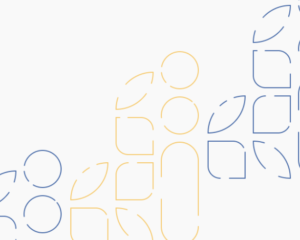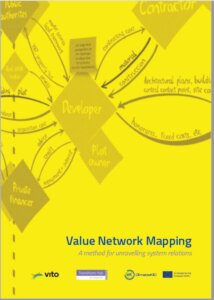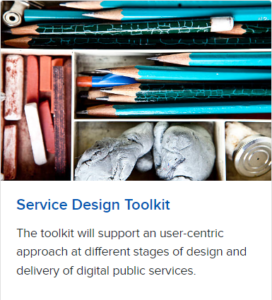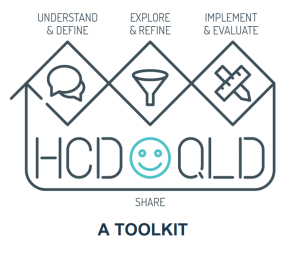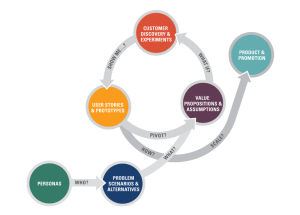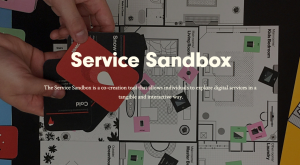Service design and its many closely related disciplines and practices—interaction design, user-experience design, and human-centred design—involves understanding and re-configuring people, infrastructure, and resources involved in delivering a service for the purpose of improving the service experience—with the public, internal and external service users, internal operators, or others.
Service design is rooted in design thinking and often involves collaborative methods that engage both service users and service delivery teams to gain an end-to-end understanding of the service as well as how to make holistic and effective improvements.
Basic principles
Services should:
- be designed based on user or customer needs rather than the internal needs of an organisation
- be designed with a system lens rather than as piecemeal components
- be designed iteratively with the input of users at all stages of development
- reference a clear purpose, demand for the service, and business case
- be designed based on data and evidence
- be inclusive and accessible
State of the practice
Service design has its roots in design thinking, marketing, and management in the private sector. Since then, many different disciplines and practices have spun off, each with its own set of professionals passionately defending the differences, overlaps and nuances between them. There is no firm consensus since these continues to be evolving disciplines and practices. Emerging practices such as enterprise design attempts to expand service design to an organisational level and citizen experience design attempts to bring a government focus to service design. Both hint at the underlying constraints, embedded cultures and diverse purposes that inevitably surface through service design projects.
Service design is closely related to digital service design and, in fact, some treat these as the same discipline. Much effort has been placed recently on digital service transformation and modernisation. That, combined with the ubiquity and efficiency of digital solutions, has tended to shift service design more closely to digital practices. Some governments have established service standards—again, with a digital emphasis—which indicates that the practice has evolved to a point of clarity around its purpose and consistency around its methods.
Considerations for use in the public sector
Most government is service based, so service design is very relevant discipline and practice. Service design is commonly used by the private sector to improve experiences for customers. Many of the same principles, practices and methods are useful but must be adapted for the public sector context. For instance, the underlying decision-making processes, policies, purposes and cultures of governments are different. Since at least the 2000’s, government units have invested in service design capabilities, primarily as part of innovation labs and digital government initiatives. Explore Digital Transformation instead.
Typical methods and tools
Common methods and tools for service design pertain to putting its principles into practice, especially in bringing human or user-centred focus. These methods are often aligned to an overarching service design methodology. While these vary greatly among different practitioners, typically some variation of discovery, idea-generation, prototyping and implementation is involved, all with frequent touchpoints with service users.
Some of the most commonly used methods and tools include:
- Empathy maps
- User-centred tools like personas
- Service journeys
- Service blueprinting
- Service scenarios
- Storyboards
What to consider when choosing a service design toolkit
When choosing a service design toolkit to use in government, consider its creator and how closely it may align with the specific purpose and needs of government. Service design toolkits created by governments or not-for-profit organisations are likely to be more easily adapted to the same context. Some are best suited to the practitioners doing the service design work.
Consider whether you are wanting to learn about service design in government before jumping in or whether you are ready to get started. See Service Design toolkits that contain guidance as well as tools.
Consider whether or not you have decided that a digital solution is appropriate. If so, digital toolkits may serve your needs more closely. If you do not know, consider more broad design toolkits or service design toolkits that are not necessarily biased toward a digital solution.
Consider whether you need a more or less detailed, step-by-step toolkit. Some contain in-depth guidance, including tips and tricks, manuals, and even facilitators guides while some offer just the basic tools and assume users know how to use them without much instruction. These are more easily adapted but more difficult to learn.
If you do not yet know if service design is the right approach, consider reading about different disciplines or practices including Product Design or Design more broadly. Or, choose a toolkit that will help you contextualise your situation or choose an approach.
View all toolkits for Service Design
Would you like some help?
How well-versed are you with applying these tools and methods? Do you have experience with applying these approaches in practise? If not, then the language and complexity of the working methods can be daunting. Find help and connect to a someone who has practical experience in addressing public sector challenges. But be aware so that you do not get sucked into applying their favourite method instead of leading with your unique problem or situation.
Learn about building skills and capacity
Find OPSI network members who are working with service design
Reach out to OPSI for guidance with service design
Request a webinar on this topic – top-requested topics will be prioritised


